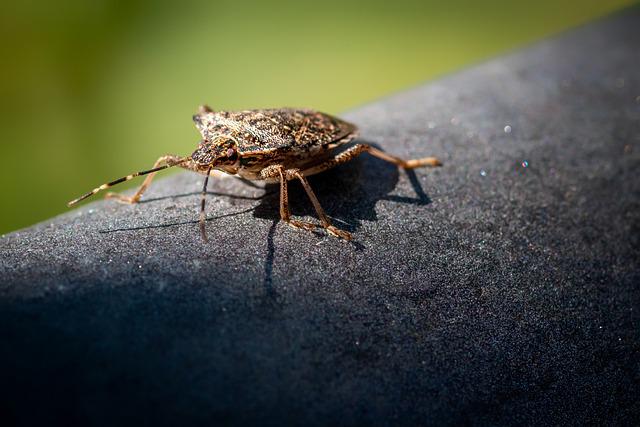Where Do Stink Bugs Come From?
Stink bugs, particularly brown marmorated stink bugs, are an invasive species in the United States. Invasive species have a tendency to outcompete native species in a particular area, since the local population has not had the opportunity to adapt to the invader; with no natural predators and abundant food supplies, invasive species can take over quickly.
So how exactly did stink bugs get here? Why are they such a nuisance? And how can you eliminate a stink bug problem on your property?
Origins of the Brown Marmorated Stink Bug
The brown marmorated stink bug originates in Asia, typically found in China, Japan, and Korea. However, at some point, a small population of stink bugs made its way to Pennsylvania; the bug was first discovered in Allentown, Pennsylvania in September 1998, though it may have arrived in the states several years earlier. It’s suspected that the bug was mistakenly introduced to the wild.
Since then, the brown marmorated stink bug has made its way to 41 states, causing tens of millions of dollars of agricultural losses every year.
When Stink Bugs Show Up
Stink bugs usually start showing up in the fall, when temperatures begin to drop. In an effort to stay warm, but active in the cool weather, stink bugs typically cling to the warm sides of buildings – often meaning the south and west sides of a building, since these are most likely to be warmed by afternoon sunlight.
After congregating, stink bugs gradually make their way into your home, finding small cracks and holes to travel through. Ultimately, these bugs are just looking for a warm place where they can spend the winter, but because there are so many of them, they can be a major nuisance.
There are some pieces of good news here. For starters, stink bugs aren’t particularly dangerous to humans or animals. They don’t sting, they don’t bite, and they don’t carry dangerous diseases. They also don’t actively destroy your property. Additionally, during winter, stink bugs are just looking for a place to remain dormant, so they tend to be inactive.
Stink bugs don’t want to be inside; they want to be outside. They only get inside your home to stay warm – and then they don’t remember how to get back outside.
Preventing and Eliminating Stink Bugs
So what steps can you take to prevent and eliminate stink bugs in your house?
- Find and seal cracks and holes. Your first line of defense is to find and seal any cracks, crevices, or holes in your property. If there’s a hole bigger than the width of a pencil, a stink bug will easily fit through it. Use caulk or other sealants to plug up all these holes and make sure that stink bugs find no way to squirm into your house.
- Utilize screens. During the summer and fall, many people like to keep their doors and windows open for fresh air. There’s nothing inherently wrong with this, but if you plan on this type of behavior, make sure you implement screens. A good screen will be an effective deterrent, preventing stink bugs from finding their way inside.
- Spray the exterior of the home. If your home typically has stink bug problems in fall, or if you just want to make sure you minimize your chances of encountering these pests, consider spraying the exterior of your building proactively. Commercially available sprays act as repellent and/or insecticide, preventing stink bugs from congregating and killing them if they do.
- Keep your outside lights off. Like most bugs, stink bugs are attracted to lights, especially at night. If you want to prevent them from gathering unnecessarily, keep your outside lights turned off. This is especially important during the fall, when outdoor temperatures begin to drop, or when you notice stink bugs starting to arrive.
- Use a vacuum cleaner to remove bugs inside your home. One of the most annoying things about stink bugs is that they emit an awful stench when threatened or crushed. Accordingly, most people don’t want to kill them via conventional means. One useful alternative is sucking up stink bugs with a vacuum cleaner. This may still trigger a smell, but it will be far more manageable than if you had squashed those bugs.
Stink bugs aren’t dangerous or destructive, but they are highly annoying and difficult to remove from a home once it’s been infested. As an invasive species, populations of stink bugs may continue growing indefinitely, making them even more of a nuisance for farmers and homeowners alike.
Fortunately, if you adopt a handful of proactive strategies and know how stink bugs behave, you can effectively stop stink bugs from accumulating on the exterior of your home and prevent them from ever coming inside.
I’m a single mother of 2 living in Utah writing about startups, business, marketing, entrepreneurship, and health. I also write for Inc, Score, Manta, and Newsblaze

